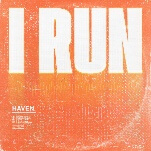The harrowing story of Norway’s deadliest terrorist attack and the man behind it

On July 22, 2011, a sandy blond-haired man with dead blue eyes, dressed in a homemade Norwegian police uniform, planted a bomb outside of the prime minister’s office in Oslo. The explosion killed eight people. Armed with semi-automatic weapons, the man then drove 24 miles to Utøya island, the site of a summer camp for the Worker’s Youth League, the youth arm of the governing Labour Party. Within an hour and a half, he had killed 67. They were almost all teenagers.
One Of Us is the story of that man, Anders Behring Breivik. Written by Norwegian journalist Åsne Seierstad, One Of Us expertly details how a troubled boy with violent tendencies transformed into a graffiti tagger fascinated by hip-hop culture, a hungry capitalist and an aspiring politician, a World Of Warcraft addict, and finally a convicted terrorist currently in solitary confinement at 36 years old.
Seierstad’s latest work of non-fiction—she’s also the author of 2003’s excellent book, The Bookseller Of Kabul—uses police interviews, psychiatry reports, court documents, emails, and hundreds of interviews to tell the story of the deadliest attack on Norway since World War II. Working as an investigative journalist, she talked to Breivik’s friends and family, including his mother, former classmates, colleagues, and political associates. Breivik refused an interview, so Seierstad went inside his head via his own writings on the internet, in letters and from his 1,500 page manifesto, 2083: A European Declaration Of Independence, which he published online the morning of the attacks. (He did write Seierstad a couple of letters from his jail cell. They’re published in part in the epilogue, which is also where Seierstad reveals her detailed methodology. Journalism buffs should start here first as attributions are omitted throughout the actual text.)
The book is organized into three rough sections: the making of a murderer, the massacre, and the aftermath. Readers learn about Breivik’s unstable childhood with a depressed mother and estranged father and how he became submerged in the city’s underground graffiti community. After a failed career as a businessman and a stint with the anti-immigration Progress Party, he hid in the online gaming world, becoming the idealized version of himself—menacing and revered—only to emerge years later obsessed with the looming “Islamization of Europe.” Readers are brought inside Breivik’s world as he tracks down the chemicals needed to make a bomb powerful enough to topple a building and as he sews his own police uniform, a crucial disguise that allowed him to easily gain access to Utøya. This section starts off slow and overwhelmed by minutiae, but these details prove important as the story progresses.








































